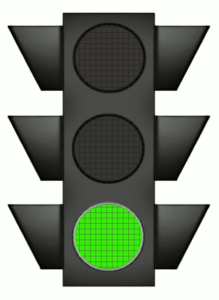
There are many different kinds of muscular dystrophy types. Symptoms of the most common variety begin in childhood, primarily in boys. Other types don’t surface until adulthood.
Can someone who has Muscular Dystrophy get burial/life insurance? Yes ! you can. Fortunately, you can get a guaranteed issue whole life policy. Hi, I am Mitch Winstead from Allstar Senior Benefits. If you would like a quote with no obligation our toll-free number is 866-598-8170 or 910-538-4547. Our website is https://allstarseniorbenefits.com Our Facebook page is www.facebook/medsuppguru. Our email address is mitch@allstarseniorbenefits.com. We have been helping people for over 34 years. This is a policy that builds cash value within 18-24 months. It is a permanent policy that lasts your WHOLE life, not a term life policy that may end in 10-20 years. IS it affordable, yes it is. You may pay 30 % more for your policy. It is better than having no policy at all. The younger you get your policy the better. Your policy cannot be canceled for any reason unless you do not pay your premium. After your policy has cash value, you can use that to pay your premiums if you get into a financial jam. Before I got in the business of being an insurance broker, I worked as a Physical Therapist Assistant. I have been licensed for almost 24 years. I helped a few people with MD. I still help some patients every week get better from a variety of health issues. I co-own a physical practice called Physical Therapy for Life. Now back to the subject of MD.
There is no cure for muscular dystrophy. But medications and therapy can help manage symptoms and slow the course of the disease.
Symptoms
The main sign of muscular dystrophy is progressive muscle weakness. Specific signs and symptoms begin at different ages and in different muscle groups, depending on the type of muscular dystrophy.
Duchenne muscular dystrophy
About half of people with muscular dystrophy have this variety. Although girls can be carriers and mildly affected, the disease typically affects boys.
About one-third of boys with Duchenne muscular dystrophy don’t have a family history of the disease, possibly because the gene involved may be subject to sudden abnormal change (spontaneous mutation).
Signs and symptoms typically appear between the ages of 2 and 3, and may include:
- Frequent falls
- Difficulty getting up from a lying or sitting position
- Trouble running and jumping
- Waddling gait
- Walking on the toes
- Large calf muscles
- Muscle pain and stiffness
- Learning disabilities
Becker muscular dystrophy
Signs and symptoms are similar to those of Duchenne muscular dystrophy, but typically are milder and progress more slowly. Symptoms generally begin in the teens but may not occur until the mid-20s or even later.
Other types of muscular dystrophy
Some types of muscular dystrophy are defined by a specific feature or by where in the body symptoms first begin. Examples include:
- Myotonic. Also known as Steinert’s disease, this form is characterized by an inability to relax muscles at will following contractions. Myotonic muscular dystrophy is the most common form of adult-onset muscular dystrophy. Facial and neck muscles are usually the first to be affected.
- Facioscapulohumeral (FSHD). Muscle weakness typically begins in the face and shoulders. The shoulder blades might stick out like wings when a person with FSHD raises his or her arms. Onset usually occurs in the teenage years but may begin in childhood or as late as age 40.
- Congenital. This type affects boys and girls and is apparent at birth or before age 2. Some forms progress slowly and cause only mild disability, while others progress rapidly and cause severe impairment.
- Limb-girdle. Hip and shoulder muscles are usually the first affected. People with this type of muscular dystrophy may have difficulty lifting the front part of the foot and so may trip frequently. Onset usually begins in childhood or the teenage years.
When to see a doctor
Seek medical advice if you notice signs of muscle weakness — such as increased clumsiness and falling — in yourself or your child.
Causes
Certain genes are involved in making proteins that protect muscle fibers from damage. Muscular dystrophy occurs when one of these genes is defective.
Each form of muscular dystrophy is caused by a genetic mutation particular to that type of the disease. Many of these mutations are inherited. But some occur spontaneously in the mother’s egg or the developing embryo and can be passed on to the next generation.
Risk factors
Muscular dystrophy occurs in both sexes and in all ages and races. However, the most common variety, Duchenne, usually occurs in young boys. People with a family history of muscular dystrophy are at higher risk of developing the disease or passing it on to their children. Life expectancy with muscular dystrophy.
Complications
The complications of progressive muscle weakness include:
- Inability to walk. Some people with muscular dystrophy eventually need to use a wheelchair.
- Shortening of muscles or tendons around joints (contractures). Contractures can further limit mobility.
- Breathing problems. Progressive weakness can affect the muscles associated with breathing. People with muscular dystrophy may eventually need to use a breathing assistance device (ventilator), initially at night but possibly also in the day.
- Curved spine (scoliosis). Weakened muscles may be unable to hold the spine straight.
- Heart problems. Muscular dystrophy can reduce the efficiency of the heart muscle.
Diagnosis
Your doctor is likely to start with a medical history and physical examination.
After that, your doctor may recommend:
- Enzyme tests. Damaged muscles release enzymes, such as creatine kinase (CK), into your blood. In a person who hasn’t had a traumatic injury, high blood levels of CK suggest a muscle disease — such as muscular dystrophy.
- Electromyography. An electrode needle is inserted into the muscle to be tested. Electrical activity is measured as you relax and as you gently tighten the muscle. Changes in the pattern of electrical activity can confirm a muscle disease.
- Genetic testing. Blood samples can be examined for mutations in some of the genes that cause different types of muscular dystrophy.
- Muscle biopsy. A small piece of muscle can be removed through an incision or with a hollow needle. Analysis (biopsy) of the tissue sample can distinguish muscular dystrophies from other muscle diseases.
- Heart-monitoring tests (electrocardiography and echocardiogram). These tests are used to check heart function, especially in people diagnosed with myotonic muscular dystrophy.
- Lung-monitoring tests. These tests are used to check lung function.
Treatment
There’s no cure for any form of muscular dystrophy. But treatment can help prevent or reduce problems in the joints and spine to allow people with muscular dystrophy to remain mobile as long as possible. Treatment options include medications, physical therapy, and surgical and other procedures.
Medications
- Corticosteroids, such as prednisone, which can help improve muscle strength and delay the progression of certain types of muscular dystrophy. But prolonged use of these types of drugs can cause weight gain and weaken bones, increasing fracture risk.
- Heart medications, such as angiotensin-converting enzyme (ACE) inhibitors or beta-blockers, if muscular dystrophy damages the heart.
Therapy
Several types of therapy and assistive devices can improve quality and sometimes the length of life in people who have muscular dystrophy. Examples include:
- Range-of-motion and stretching exercises. Muscular dystrophy can restrict the flexibility and mobility of joints. Limbs often draw inward and become fixed in that position. Range-of-motion exercises can help to keep joints as flexible as possible.
- Exercise. Low-impact aerobic exercise, such as walking and swimming, can help maintain strength, mobility and general health. Some types of strengthening exercises also might be helpful. But it’s important to talk to your doctor first because some types of exercise might be harmful.
- Braces. Braces can help keep muscles and tendons stretched and flexible, slowing the progression of contractures. Braces can also aid mobility by providing support for weakened muscles.
- Mobility aids. Canes, walkers, and wheelchairs can help maintain mobility and independence.
- Breathing assistance. As respiratory muscles weaken, a sleep apnea device may help improve oxygen delivery during the night. Some people with severe muscular dystrophy may need to use a machine that forces air in and out of their lungs (ventilator).
Surgery
Surgery may be needed to correct a spinal curvature that could eventually make breathing more difficult.
Clinical trials
Testing new treatments, interventions, and tests as a means to prevent, detect, treat or manage this disease.
Lifestyle and home remedies
Respiratory infections may become a problem in later stages of muscular dystrophy. It’s important to be vaccinated for pneumonia and to keep up to date with influenza shots.
Dietary changes haven’t been shown to slow the progression of muscular dystrophy. But proper nutrition is essential because limited mobility can contribute to obesity, dehydration, and constipation. A high-fiber, high-protein, low-calorie diet may help.
Coping and support
A diagnosis of muscular dystrophy can be extremely challenging. To help you cope:
- Find someone to talk with. You may feel comfortable discussing your feelings with a friend or family member, or you might prefer meeting with a formal support group.
- Learn to discuss your child’s condition. If your child has muscular dystrophy, ask your doctor about the most appropriate ways to discuss this progressive condition with your child.
- When it comes to burial/life insurance it is important to talk with professionals at Allstar Senior Benefits.
Preparing for your appointment
You may be referred to a doctor who specializes in the diagnosis and treatment of muscular dystrophy.
What you can do
- Write down the signs and symptoms you or your child has been experiencing, and for how long.
- Bring photos or video recordings that illustrate your concerns.
- Write down key medical information, including other conditions.
- Make a list of all medications, vitamins, and supplements taken by you or your child.
- Note whether anyone in your family has been diagnosed with muscular dystrophy.
Questions to ask your doctor or your child’s doctor
- What’s the most likely cause of these signs and symptoms?
- What tests are needed?
- What are the possible complications of this condition?
- What treatments do you recommend?
- What is the long-term outlook?
- Do you recommend that our family meet with a genetic counselor?
Don’t hesitate to ask other questions during your appointment.
What to expect from your doctor
Your doctor is likely to ask you a number of questions. Being ready to answer them may make time to go over points you want to spend more time on. You may be asked:
- What symptoms have you noticed?
- When did they start? Are they getting worse?
- Has anyone in your immediate family had muscular dystrophy?
- Do you plan on having more children?
I know more research is being done to find a cure for Muscular Dystrophy. Let us hope that a cure will be found. This article is supposed to be a brief overview. If you want a quote on burial /life insurance with no obligation, contact our office at 866-598-8170 or 910-538-4547. Our website is https://allstarseniorbenefits.com Our Facebook page is https://www.facebook.com/medsuppguru Our email address is mitch@allstarseniorbenefits.com











